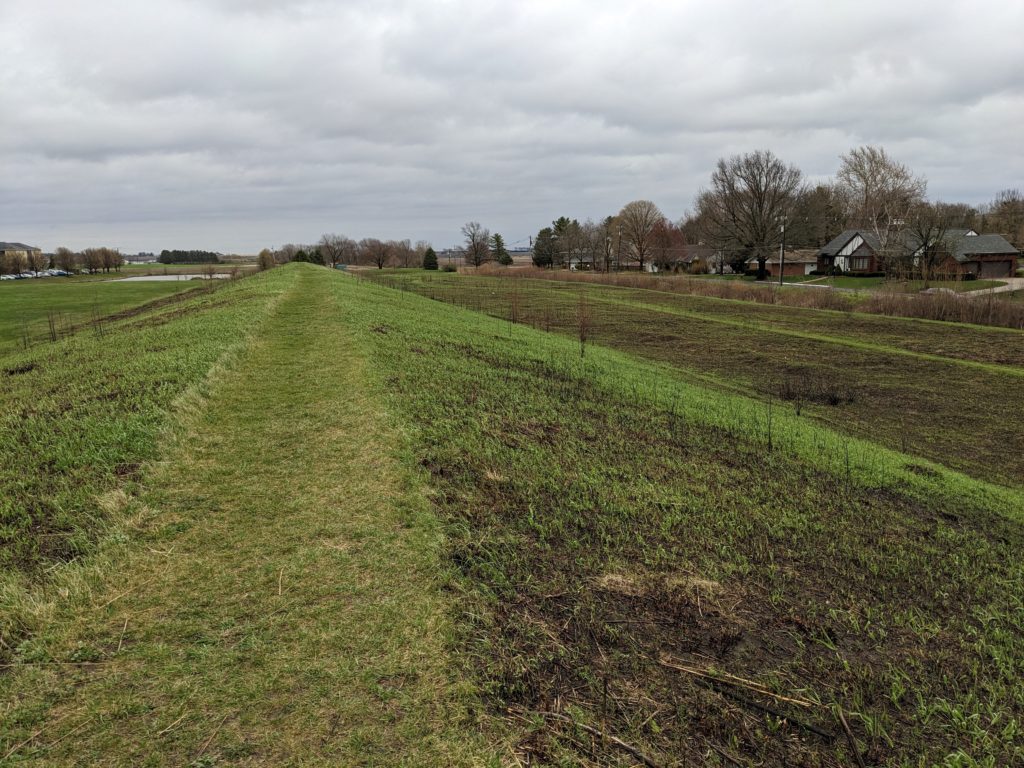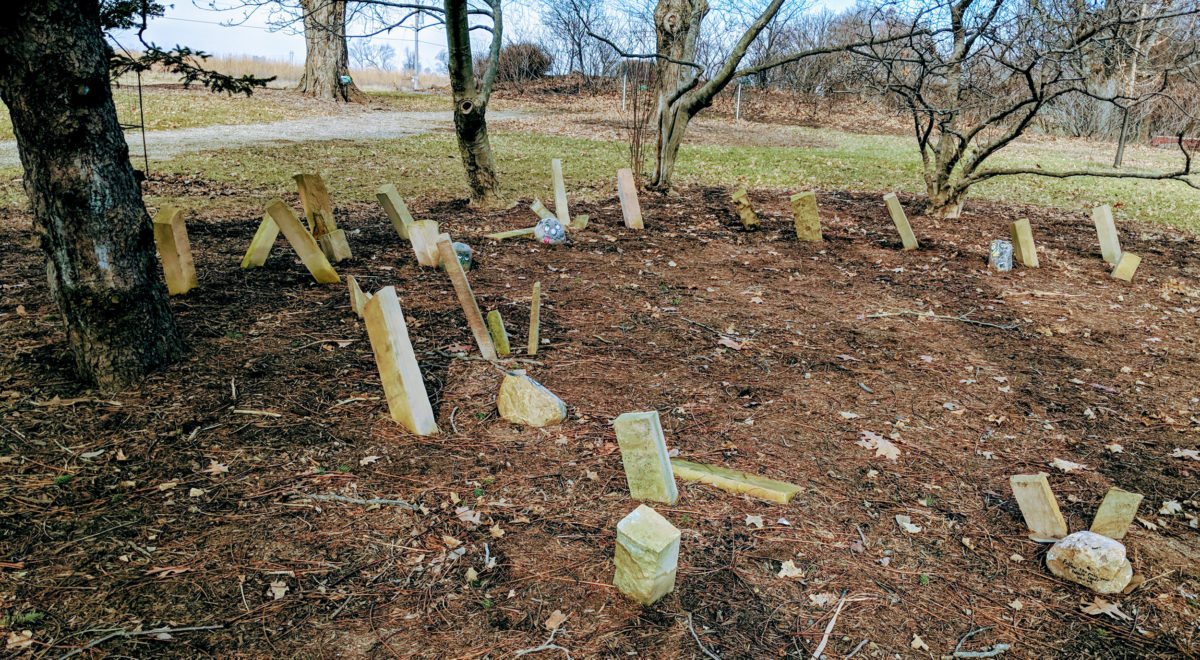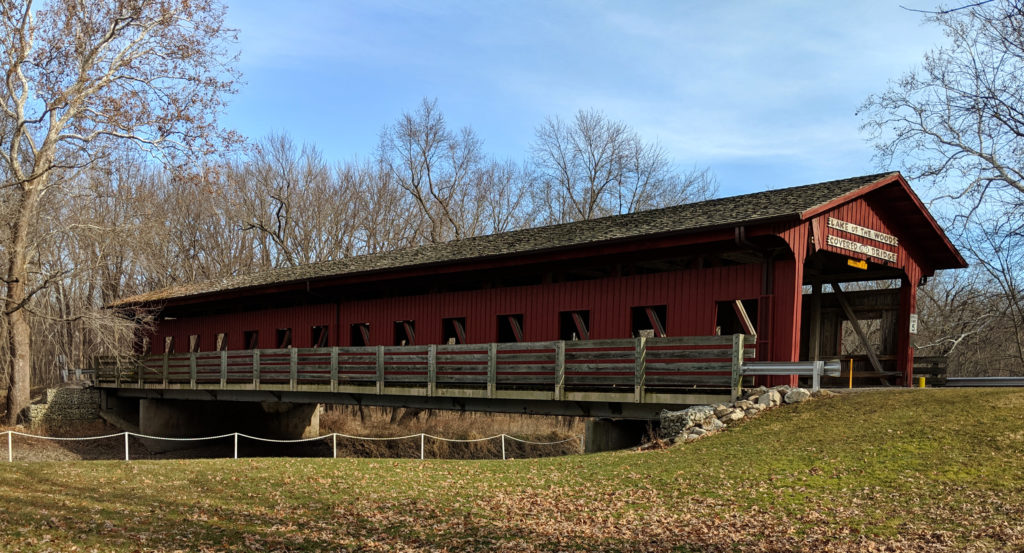Prairie grass is growing like a weed where they did the burn a couple of weeks ago.
It’s not visible in the picture, but I saw a Yellow-shafted Flicker fly up ahead of me. They’re showy birds, always fun to see.


Prairie grass is growing like a weed where they did the burn a couple of weeks ago.
It’s not visible in the picture, but I saw a Yellow-shafted Flicker fly up ahead of me. They’re showy birds, always fun to see.

This morning Ashley was demonstrating good skills at hiding in the prairie grasses. Even though she’s black rather than brown, she was pretty well hidden when she crouched in the grass.


Jackie and I went for a hike at Lake of the Woods yesterday. One thing I particularly wanted to do was get a new photo of the red bridge in the Japanese garden area, and use it to illustrate an Esperanto-language haiku.
We parked outside the Museum of the Grand Prairie, and walked around back, through the botanical garden, to where the Japanese garden was, only to find that it is currently being renovated. The red bridge is there, but seems to be under detention for some reason:

And it wasn’t the only thing in detention. There was another big detention area seemingly devoted to landscaping elements of various sorts. I didn’t get pictures of all of them, but among them were these rocks:

We escaped the detention area without being detained ourselves and walked a ways along the bike path, only to come upon the red bridge’s big brother:

I’m suspecting plans underway to mount a prison break, but you didn’t hear it from me.
At about this point Jackie checked out the map for the Lake of the Woods, which suggested that, aside from the bike path (which is paved), there aren’t very many paths on that side of the forest preserve. And reminded me that she particularly wanted to walk on some non-paved paths that day.
So we turned around, spent a few minutes walking on the (unpaved) path in the Rayburn-Purnell Woods, then crossed the road to walk in the Buffalo Trace Prairie. It has lots of (unpaved) paths, with signage suggesting ways to arrange your walk to add up to a variety of distances, up to 5 miles. We just hiked the main loop around the perimeter of the prairie, to cover 2.6 miles.
One the trail we met a cute li’l pupper who was momentarily standoffish, but when we and the owner paused to converse for a minute, the dog decided we must be okay, and trotted up for pets from me and then from Jackie.
The image at the top is of a circle of standing stones at the edge of the botanical garden. While admitting that I did not check, I do not think they are sun-aligned.

The guy who has been leading the stewardship effort for the patch of prairie right next to Winfield Village is looking to transition some of the effort to someone who lives here, and I have expressed a willingness to take on some of the stewardship tasks.
This would primarily consist of working to remove non-prairie species, together with using the prairie for education, and advocating for the prairie when other people imagine some other use for the land. But one essential step with maintaining prairie land is occasional burning. I could probably manage the rest of it, but I’m certainly not qualified to do a prairie burn.
To start to remedy that, yesterday I participated in a burn at a small patch of prairie land near Urbana, managed by a guy from Pheasants Forever. I had told him of my interest in learning to manage a burn, so he talked me through what he did as he did it, explaining the thought-process behind where he started and what he burned, and also introduced me to the equipment involved.
The patch of prairie we burned was 1.5 acres, and took a little over an hour to burn.
I neglected to get a picture of myself taken while I was dressed in my Nomex coveralls, but above see a nice picture from the burn itself, and below for an older picture of our own little patch of prairie.

Nothing like walking through tall prairie grass to clean up a pair of muddy boots.

A pretty picture, plus a test of the “Image” post format.

One utterly predictable consequence of climate change is that the price of northern farmland will rise as growing regions shift north.
Tobias Buckell yesterday shared a report that just this sort of price shift is now occurring—interesting to me because this result is not merely predictable: I predicted it my own self, way back when I was in high school.
Global warming was still pretty speculative then (in the 1970s), but people were already talking about the greenhouse effect and trying to figure what the result would be. At the time, I was mainly thinking about the geopolitical implications of shifting the growing regions north—how things would change if Canada and the (then) Soviet Union were suddenly way more productive of food, while places like the United States, China, and France suddenly less so.
What I discovered, though, was that those northern regions aren’t nearly as fertile as places like Illinois, where 8,000 years of tall grass prairie left an incredibly thick layer of rich soil.
No matter how perfect the climate is, Saskatchewan is not going to produce the bushels per acre of Illinois or Kansas. Their soil is not only less fertile, it’s also much more fragile than the soil of the tall grass prairies. The fertile layer isn’t as deep, so the land must be plowed with greater care, and it will in any case be more quickly depleted.
I’m sure there’s a lot more and better data available now than there was back then, but I doubt if it changes the fundamentals. Shifting growing regions means winners and losers, but it also means less total food production.